- Q: Why should I use recovered cypress or longleaf pine?
When looking for the wood to use on your beautiful project,
virgin Cypress and Longleaf Pine must be seriously considered.
These are two of the major woods that built America. Whether we’re
recovering them from an old river or an old building, they are truly “Wood, the way it used to be”.
If you’re an architect, fine homebuilder, cabinetmaker or rare woods purist,
Krantz Recovered Woods will give your next project exceptional beauty, strength
and a captivating story that dates back to the days of Columbus’ discovery of America.
The allure that our recovered cypress and longleaf pine provide is beyond compare.
Krantz Recovered Woods’ products are all environmentally sound, created by
recycling a resource lost underwater or used in a building years ago and is now ready
to live again in your project.
This recovered virgin growth wood is “antique quality” that has not been
available in any significant amount for almost a century. The virgin growth lumber
we offer displays a fineness of grain pattern and density that has not been available
to woodworkers for generations and is instantly recognizable as “antique”.
Krantz Recovered Woods have the same fine grain and texture as the antiques of 100
years ago because they’re from the same forests. Fine designs take on a whole new
look with the use of this rare, high quality lumber.
top
- Q: Where do you recovered woods come from?
-
We get our recovered (sinker) cypress and longleaf pine logs from Louisiana.
Our reclaimed (from old buildings) cypress and longleaf pine come from buildings
across the southeastern US.
top
- Q: How much recovered wood is available in the United States? Is it being replenished?
-
The amount of recovered cypress and longleaf pine available in the United States is uncertain.
There are a finite number of old buildings available for reclaimed cypress and longleaf pine beams,
and only a certain number of sinker logs available for “pulling”.
Supply estimates range from 10-30 years.
top
- Q: What wood grades does Krantz Recovered Woods sell?
-
In cypress, we sell Select and Pecky grades:
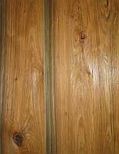
select grade sinker cypress
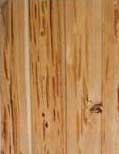
pecky grade sinker cypress
In longleaf pine, we sell Common grade and Select grade.
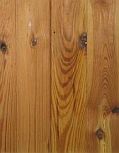
common grade reclaimed longleaf pine
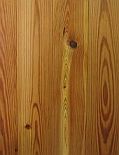
select grade reclaimed longleaf pine
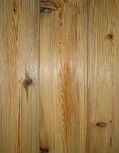
common grade sinker longleaf pine
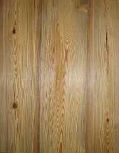
select grade sinker longleaf pine
top
- Q: What lengths are Krantz Recovered Woods boards?
-
Our recovered wood is sold in random lengths from 2’ to 16’ unless specified otherwise.
Rough Sawn 4x4 to 12x12 timbers (which are custom cut for your job) are available up to 16’,
sometimes as long as 24’.
top
- Q: What does rough sawn and smooth planed mean?
-
Rough sawn wood has a rough saw texture and APPROXIMATE, ROUGH DIMENSIONS.
It could have stick marks left during the drying process, weathering (grey or charcoal colored),
and small metal banding marks where it was bundled together.
Smooth planed wood has been run through a wood planer which gives it a smooth finish,
similar to a 2x4 you would find at the lumberyard. It is milled to exact dimensions and
planed on all four sides unless specified otherwise.
top
- Q: Are cypress and longleaf pine softwoods or hardwoods?
-
Cypress is a softwood, but it is graded by the National Hardwood Lumber Association’s
cypress rules. Although it has needlelike leaves typical of softwoods, cypress loses
its needles during the autumn and winter. Longleaf pine is also a softwood, graded
by the Southern Pine Inspection Bureau.
top
- Q: How dry is your cypress and longleaf pine?
-
We dry our wood to a moisture content of approximately 15%. Timbers and items
custom sawn (from sinker logs) for your job will be freshly sawn, wet wood.
Timbers and items custom sawn from reclaimed beams will have a moisture content
of approximately 15%.
top
- Q: Is cypress or longleaf pine a good interior flooring material?
Yes!
Cypress flooring is a good choice, but it is a relatively soft wood (comparable
in hardness to modern day Douglas Fir) and will take on an “aged” look when used
in high traffic areas. To give it a harder finish, you might consider sealing it
with Waterlox’s “Gym Floor Sealer” product.
Longleaf Pine is the perfect choice for flooring because of it’s hardness, which
is comparable to modern day red oak. Longleaf Pine has been used for centuries
in old American homes and is still in use today. It is the most popular choice
among our customers because of it’s high durability and beauty.
top
- Q: Are cypress and longleaf pine easy to work with?
-
Cypress works well with both hand and power tools. The wood planes easily and resists warping.
Although cypress is resinous, the resin (called cypressene) isn’t a sticky sap like other woods.
It glues well, sands easily and readily accepts finishes. Longleaf Pine is harder and therefore
requires more care when installing, sometimes pre-drilling to prevent cracking when nailing near the edges.
top
- Q: How many different types of cypress and longleaf pine do we have in the U.S.?
-
There is one species of cypress grown in the United States. Bald cypress is the common name for
cypress (Taxodium distichtim) but it is known by many different marketing names. It is called
Bald cypress because it loses its needles in the Fall. Longleaf Pine is a species of the
general “Southern Yellow Pine” group, which includes other pines like Slash Pine, Shortleaf Pine,
and Loblolly Pine.
top
- Q: Are cypress and longleaf pine durable?
-
Cypress has a natural preservative oil known as cypressene which gives the heartwood
resistance to insects and decay. With a suitable surface treatment, cypress generally
has a superior durability, holding paint well and resisting weather. Longleaf Pine
is highly resinous and that gives it a very durable characteristic, especially suited
for interior applications.
top
- Q: What is the difference between plank flooring and strip flooring?
-
Plank flooring is 3” actual width or greater tongue and groove boards, a longer lengths.
Strip flooring is less than 3” actual width tongue and groove flooring, usually 18”
to 60” long.
top
- Q: What is the difference between Board Feet, Square Feet, and Linear Feet?
-
Board Feet is a measurement of volume: it is a term used within the lumber industry
equal to a piece of wood 12”x12”x1” thick, or 144 cubic inches. Our products are
offered in linear feet.
Square Feet is a measurement of area: it’s like the floor area of your home, simply
width x length, for example 40’ wide x 30’ long = 1200 square feet.
Linear Feet is a measurement of length: it only measures how long something is,
not its width or thickness. So, a piece of wood 1"x6"x16’ and a piece of wood 4”x8”x16’
are both 16 linear feet of wood. Also, if you are 5’-6” tall, that means you are
5’-6” linear feet long.
top
- Q: How do I find out how many Linear Feet I need to cover a certain area?
-
First, determine how much square footage (area) you have to cover. If it is a wall
10’ high and 50’ long, that’s 10’x50’=500 Square Feet.
Next, pick the cypress product that you want to use. Determine the coverage for that product.
The coverage (in inches) is shown on each of our product pages. Then, divide 12 by that number, and
that new number is what we call a Conversion Factor. That Conversion Factor is how
many linear feet you will need of that product to cover one square foot of area. Then
multiply your Square Footage by that Conversion Factor, and voila!, you now know
exactly how much of that cypress product you will need to cover that area. We suggest
you add 5%-10% extra to be safe.
Example: Cover a floor with Select Reclaimed Longleaf Pine Flooring 1x6, item #120SRLP:
-
Area to cover: floor of 13’x18.5’=240.5 square feet.
-
Item chosen to cover floor: Select Reclaimed Longleaf Pine Flooring 1x6 (coverage
of 5”)
-
12 divided by 5” = 2.4, which is the Conversion Factor
-
Multiply 240.5 square feet x 2.4 Conversion Factor = 577.2 Linear Feet.
-
Add 5%-10% extra.
top
- Q: How does Krantz Recovered Woods ship its products to me?
-
For normal sized orders (up to about 10,000 lbs.), we use LTL (less than truckload)
trucking companies to deliver your wood in an enclosed box trailer. For larger orders,
we’ll use a trucking company that hauls on flatbed trailers. They will cover your
wood with a tarp while in transit. The trucking company will call you the day before
to let you know when they will arrive. Your wood will arrive strapped together in bundles.
Usually the truck can deliver right on your site. You are responsible for unloading.
top
- Q: How much is shipping?
Residential shipping minimum charge is $1000.
Commercial shipping minimum charge is $1000.
For that minimum charge, you can ship about 500 lbs.
top
- Q: Can I pick up my order in Manor at your office?
-
Yes, you can pick up your order here. We’ll have to collect sales tax on
the whole order if you pick up here, but not if we ship out of state.
We would be happy to show you our showroom office, yard, and production facilities.
top
- Q: Do I have to unload the shipment myself?
-
As an alternative to you having to unload the wood yourself, we can ship it to your favorite local lumberyard,
who can then re-load the order on their truck, deliver it, and then unload at the jobsite with their equipment.
This is something that you would need to arrange (and possibly pay) for directly in advance with the lumberyard.
If you decide to do this, please give us the name, contact person, address, and phone number of the lumberyard you've chosen.
top
- Q: Do you ship via UPS?
-
No. UPS and other common package carriers are not configured to carry large bundles of wood.
top